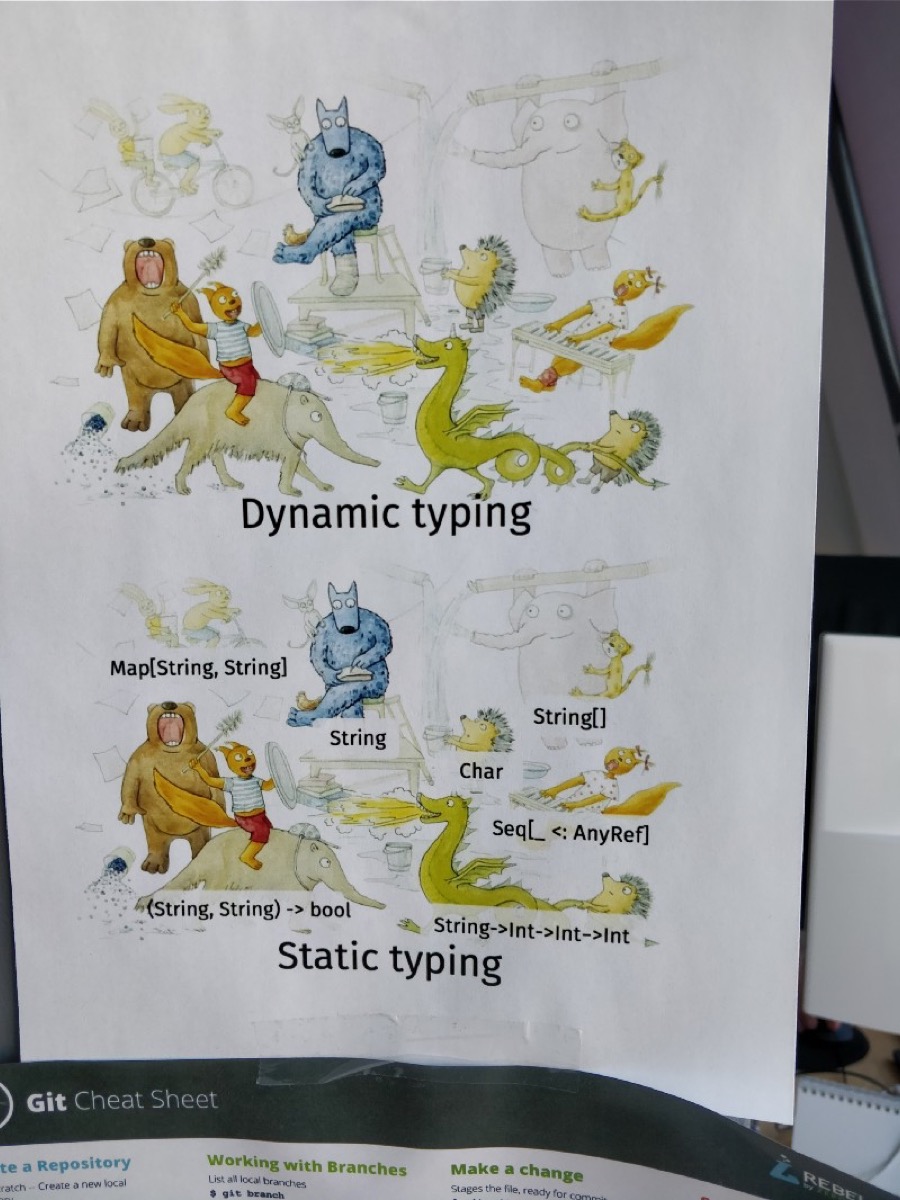The real power of programming in Scala is not mimicking Haskell and overusing monads, but in taking advantage of its type system.
Table of Contents
In Scala, we don’t have an excuse to write “Stringly typed” code, because we can easily create a class for every type in our application using value classes.
class FirstName(val value: String) extends AnyVal
class LastName(val value: String) extends AnyVal
class EmailAddress(val value: String) extends AnyVal
case class User(firstName: FirstName, lastName: LastName, emailAddress: EmailAddress)
Unlike type aliases, those are real classes (at least during compilation) and can be used to increase the readability and enforce the correctness of our code.
Obviously, when we need the underlying value, we have to write something like: firstName.value, lastName.value, etc. It gets annoying really quickly. What can we do instead of that? If we use Shapeless, we can move the additional code to where we create new instances:
import shapeless.tag
import shapeless.tag.@@
trait FirstNameTag
trait LastNameTag
trait EmailAddressTag
type FirstName = String @@ FirstNameTag
type LastName = String @@ LastNameTag
type EmailAddress = String @@ EmailAddressTag
case class User(firstName: FirstName, lastName: LastName, emailAddress: EmailAddress)
val user = User(
firstName = tag[FirstNameTag][String]("first name"),
lastName = tag[LastNameTag][String]("last name"),
emailAddress = tag[EmailAddressTag][String]("mail@example.com")
)
s"${user.firstName} ${user.lastName}"
How many times did we pass function arguments in the wrong order? Sometimes tests can prevent it, sometimes they don’t. What happens when we have a real domain model? The invalid code does not even compile! It is much better than tests.
Can we get rid of even more tests and be sure there are no errors? What if we not only create a separate class or type for every domain type, but also for every state or context of a type?
Imagine that the users of my application can request an email confirmation. Some part of my code can look like that:
val recipient = tag[EmailAddressTag][String]("some string that is not an email address but I received it from the client")
def sendEmail(emailAddress: EmailAddress): Unit = ???
sendEmail(recipient)
Will it compile? Unfortunately yes. Will it pass the tests? Maybe, it shouldn’t, but bad tests happen. Will it work correctly? Hell no.
Of course, we can validate the email address. we can even do it twice and repeat the validation in the sendEmail function, hopefully using the same validator. We can, but we all know repeating the validation in two or more places will be the cause of an error at some point.
def sendEmail(emailAddress: ValidEmailAddress): Unit = ???
def validateEmail(emailAddress: EmailAddress): Either[InvalidEmailAddress, ValidEmailAddress] = ???
validateEmail(recipient) match {
case Left(error) => ???
case Right(email) => sendEmail(email)
}
Is it better now? Not quite, I can still send spam to everyone because there is nothing to check whether the user verified his/her email address. But types can do even that!
def sendEmail(emailAddress: VerifiedEmailAddress): Unit = ???

Of course, it is not a silver bullet. Now we need separate DTO classes for our API, data model classes for data storage, and some custom code to map between them and the rich domain model. I think it is worth all of the effort because we encapsulate all of the complexity in types.
That code is boring
Sure, that code does not look impressive; it’s not complicated; we can hire a new programmer, and that person will quickly be productive because the code is self-documenting.
We tend to be excited by complexity; just look at functional programming conference talks. Does anyone want to talk about something simple? No, the more complicated or abstract concept, the better. Really, the better?
Domain-driven design or creating domain models seems to be too simple. Not easy, just simple. In my opinion, that is exactly why it is so beautiful and useful.

